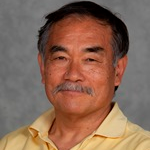Opto-Acoustic Characterization of Metals
A special issue of Metals (ISSN 2075-4701).
Deadline for manuscript submissions: closed (30 September 2019) | Viewed by 10025
Special Issue Editor
Interests: deformation theory; optical techniques for material characterization; acoustical techniques for material characterization; dynamics; field theories
Special Issues, Collections and Topics in MDPI journals
Special Issue Information
Dear Colleagues,
This Special Issue focuses on optoacoustic techniques to characterize various properties of metals including metallic compounds and metal matrix composites. Optical and acoustic waves compensate each other. Light is a transverse wave and, in most cases, does not propagate through metals. Sound is a longitudinal wave and generally travels through metals. The oscillation frequency of light is orders of magnitude higher than sound. Slow dynamics can be pseudo-static at the optical frequency and can resonate at the acoustic frequency. Fast dynamics can resonate at the optical frequency but too fast for the acoustic frequency to respond. The acoustic wave dynamics are essentially the elastic response of the material. The optical wave dynamics are associated with the electromagnetic properties of the material. It is relatively easy to find a coherent optical source but not a coherent acoustic source. By combining these contrastive properties of the two waves, we can make an analysis that we would not be able to make with the use of either wave only. As an example, using a laser to record the displacement and an acoustic signal to probe the elastic constant of a metal specimen under deformation, we can directly analyze the constitutive characteristics. The use of an optical source to trigger an acoustic event such as laser acoustic nondestructive testing makes the system remotely operational. The use of an acoustic source to excite vibrations and read out the response with a laser, such as full-field imaging of acoustic resonant motion, increases the resolution of the analysis.
Original research papers and review papers related to the above techniques and findings resulting from the application of these techniques are welcome. Application of optical and acoustic methods to the same study is preferred, but application of an optical or acoustic method is also considered for publication.
Prof. Sanichiro Yodhida
Guest Editor
Keywords
- Optical metrology
- Acoustic emission
- Optoacoustic nondestructive testing
- Acoustic resonance
- Electronic speckle-pattern interferometry
- Acoustic imaging
- Acoustic microscopy





